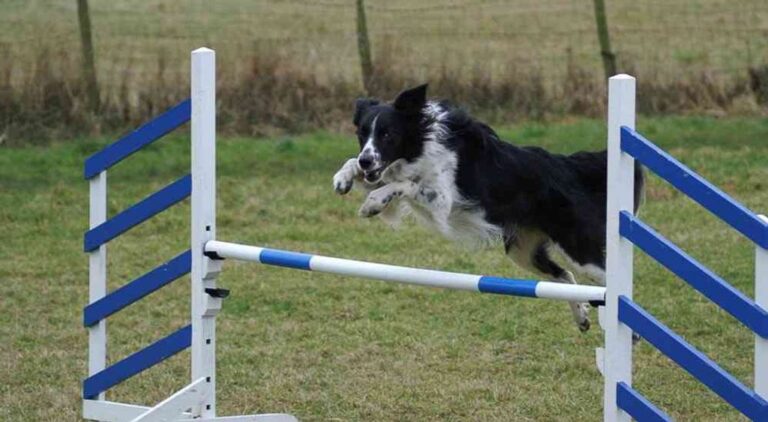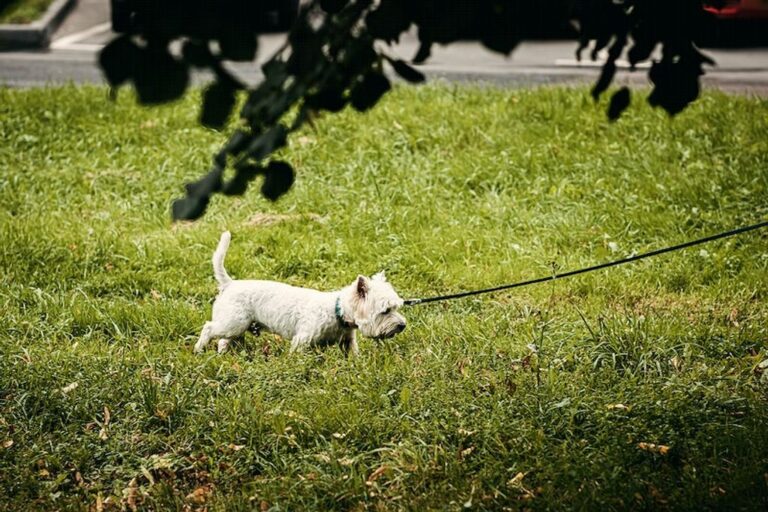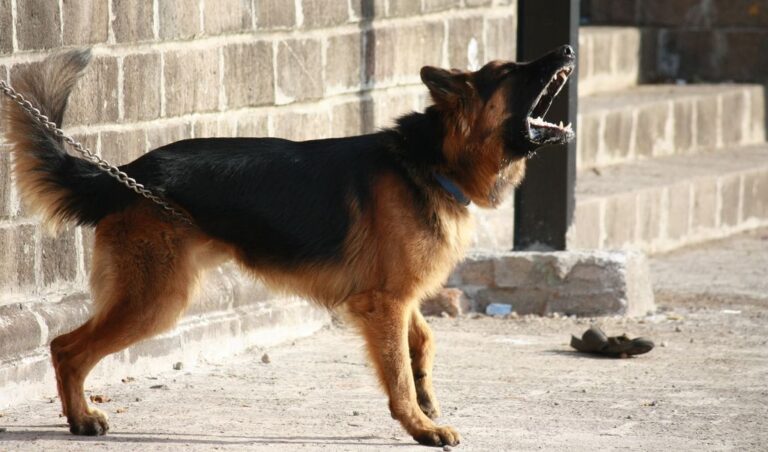How to deal with dog separation anxiety
Dealing with dog separation anxiety can be challenging for both dogs and their owners. It is important to understand the causes and signs of separation anxiety in dogs in order to provide them with the necessary support and help them overcome their anxiety. This article will provide valuable insights and strategies to help you deal with dog separation anxiety effectively.
Key Takeaways
- Dog separation anxiety is a condition where dogs experience distress when separated from their owners.
- Common causes of dog separation anxiety include changes in routine, lack of socialization, and traumatic experiences.
- Signs of dog separation anxiety include excessive barking, destructive behavior, and house soiling.
- Creating a safe and comfortable environment, establishing a consistent routine, and using interactive toys can help alleviate dog separation anxiety.
- In severe cases, seeking professional help and using calming supplements or medications may be necessary.
Understanding Dog Separation Anxiety

What is Dog Separation Anxiety?
Dog separation anxiety is a common condition that affects many dogs when they are left alone. Separation anxiety can cause dogs to exhibit destructive behavior, excessive barking, and pacing. It is important to understand that separation anxiety is not a reflection of a dog’s disobedience or lack of training. Instead, it is a result of their deep bond with their owners and their fear of being left alone.
To help our furry friends cope with separation anxiety, it is crucial to provide them with a safe and comfortable environment. This includes creating a designated relaxation area where they can retreat to when they feel anxious. Additionally, leaving them with interactive toys and puzzles can help keep their minds occupied and alleviate their anxiety.
Remember, patience and consistency are key when helping a dog overcome separation anxiety. It may take time for them to adjust, but with the right strategies and support, they can learn to feel more secure when left alone.
Causes of Dog Separation Anxiety
Separation anxiety in dogs is a common issue that many pet owners face. It can be caused by a variety of factors, including breeds that are prone to anxiety. Certain dog breeds are more predisposed to experiencing separation anxiety due to their temperament and attachment to their owners. These breeds may include Labrador Retrievers, German Shepherds, and Border Collies. However, it’s important to note that not all dogs of these breeds will develop separation anxiety. Other factors such as past experiences, lack of socialization, and changes in routine can also contribute to the development of separation anxiety.
Recognizing the Signs of Dog Separation Anxiety
When it comes to recognizing the signs of dog separation anxiety, it’s important to pay attention to your furry friend’s behavior. Dogs with separation anxiety may exhibit various symptoms, such as excessive barking, destructive chewing, or urinating and defecating indoors. They may also show signs of distress when you’re about to leave or become overly excited when you return. Training for separation anxiety can be helpful in addressing these behaviors.
Helping Your Dog Overcome Separation Anxiety

Creating a Safe and Comfortable Environment
When it comes to creating a safe and comfortable environment for our furry friends, we believe in going the extra mile. Our goal is to make sure our dogs feel secure and at ease when we’re not around. We understand that separation anxiety can be a real challenge, but with the right approach, we can help our dogs overcome it. By setting up a cozy and inviting space for our dogs, we can create a sense of security and comfort.
Establishing a Consistent Routine
When it comes to dealing with dog separation anxiety, establishing a consistent routine is key. Dogs thrive on predictability and knowing what to expect, so having a set schedule can help them feel more secure. By following a daily routine, we can provide our furry friends with a sense of stability and reduce their anxiety levels.
One way to establish a consistent routine is by setting regular times for feeding, walks, and playtime. This helps create a structured environment that dogs can rely on. Additionally, keeping a consistent bedtime and wake-up time can help regulate their internal clock and promote better sleep.
Another important aspect of a consistent routine is maintaining consistent rules and boundaries. Dogs feel more secure when they know what is expected of them and what behaviors are acceptable. Consistency in training and enforcing rules can help prevent confusion and anxiety.
It’s also important to gradually introduce changes to the routine. Sudden changes can be stressful for dogs with separation anxiety. By slowly introducing new activities or adjustments, we can help them adapt more easily and minimize their anxiety levels.
Gradual Desensitization and Counterconditioning
When it comes to helping our furry friends overcome separation anxiety, understanding the dog’s situation is key. We need to put ourselves in their paws and empathize with their feelings of fear and distress when we leave them alone. By recognizing and acknowledging their emotions, we can take the necessary steps to make them feel more secure.
One effective technique is gradual desensitization, which involves exposing the dog to short periods of alone time and gradually increasing the duration. This helps them become more comfortable with being alone and reduces their anxiety. Counterconditioning is another helpful approach, where we associate positive experiences with being alone. For example, we can give them a special treat or toy that they only receive when we’re away, creating a positive association with our absence.
To implement gradual desensitization and counterconditioning, follow these steps:
- Start by leaving your dog alone for a very short period, such as a few minutes. Gradually increase the time as your dog becomes more comfortable.
- During the alone time, provide your dog with a special treat or toy that they enjoy. This will help them associate your absence with something positive.
- Repeat this process daily, gradually increasing the duration of alone time.
- Be patient and go at your dog’s pace. It’s important not to rush the process, as this can increase their anxiety.
Remember, every dog is unique, and what works for one may not work for another. It’s essential to observe your dog’s behavior and adjust the strategies accordingly. With time, patience, and a lot of love, we can help our furry friends overcome separation anxiety and lead happier, more relaxed lives.
Using Interactive Toys and Puzzles
When it comes to keeping our furry friends entertained and mentally stimulated, interactive toys and puzzles are a game-changer. These innovative toys not only provide hours of fun but also help alleviate boredom and anxiety. By engaging your dog’s natural instincts and challenging their problem-solving skills, interactive toys and puzzles can be a great way to keep them occupied while you’re away. Plus, they can help redirect their attention from any separation anxiety they may be experiencing.
Seeking Professional Help
When it comes to dealing with dog separation anxiety, seeking professional help can make a world of difference. We understand that every dog is unique and may require a personalized approach. That’s why we recommend consulting with a certified dog behaviorist or trainer who specializes in separation anxiety. They can provide expert guidance and develop a tailored plan to address your dog’s specific needs. With their expertise and experience, they can offer a personalized touch for dogs that can help them overcome their anxiety and feel more secure when left alone.
Preventing Dog Separation Anxiety

Early Socialization and Training
When it comes to early socialization and training, we believe that it is crucial for helping your dog overcome separation anxiety. Socializing your dog from a young age can help them become more comfortable and confident in various situations. This includes exposing them to different people, animals, and environments. Additionally, training your dog to follow basic commands and cues can provide them with a sense of structure and security.
To ensure successful socialization and training, here are some tips:
- Start early: Begin socializing and training your dog as soon as possible.
- Gradual exposure: Introduce your dog to new experiences gradually, allowing them to adjust at their own pace.
- Positive reinforcement: Use rewards and praise to encourage desired behaviors.
- Consistency: Be consistent with your training methods and expectations.
Remember, every dog is unique, so it’s important to tailor your approach to their individual needs and personality. By investing time and effort into early socialization and training, you can help set your dog up for success in managing separation anxiety.
Avoiding Sudden Changes in Routine
When it comes to helping our furry friends overcome separation anxiety, consistency is key. Dogs thrive on routine, so sudden changes can be quite unsettling for them. Maintaining a consistent schedule can help provide a sense of security and stability. This means sticking to regular feeding times, exercise routines, and potty breaks. By keeping things predictable, we can help reduce stress and anxiety in our dogs.
Leaving Your Dog with a Trusted Person or Dog Sitter
When it comes to leaving your furry friend in the care of someone else, it’s important to find a trusted person or dog sitter who understands your dog’s needs and can provide the love and attention they require. Desensitization for separation anxiety can be a helpful technique to prepare your dog for being left with someone else. This involves gradually exposing your dog to short periods of separation and gradually increasing the duration over time. By doing so, your dog can learn that being apart from you is not a cause for distress.
Using Calming Supplements or Medications
When it comes to dealing with dog separation anxiety, sometimes calming supplements or medications can be helpful. These can help to reduce your dog’s anxiety and promote a sense of calmness. However, it’s important to note that these should not be seen as a long-term solution, but rather as a temporary aid in managing your dog’s anxiety.
It’s important to consult with your veterinarian before starting any supplements or medications for your dog. They can provide guidance on the best options for your dog’s specific needs. Additionally, they can help determine the appropriate dosage and monitor your dog’s response to the treatment.
While calming supplements or medications can be beneficial, it’s also important to address the underlying causes of separation anxiety. This may involve implementing behavior modification techniques, creating a safe and comfortable environment, and establishing a consistent routine.
Remember, every dog is unique, and what works for one may not work for another. It may take some trial and error to find the right combination of strategies that work best for your furry friend.
Dealing with Dog Separation Anxiety in the Long Term

Maintaining a Consistent Routine
When it comes to dealing with dog separation anxiety in the long term, maintaining a consistent routine is key. Dogs thrive on predictability, so it’s important to establish a daily schedule that they can rely on. This includes feeding them at the same time each day, taking them for walks at regular intervals, and providing them with mental and physical stimulation.
One way to maintain a consistent routine is by setting a designated time for alone training. This involves gradually increasing the amount of time your dog spends alone, starting with short intervals and gradually working your way up. By doing this, you can help your dog build confidence and independence.
In addition to a consistent routine, it’s important to monitor your dog’s progress and adjust your strategies accordingly. Every dog is different, so what works for one may not work for another. Keep an eye on how your dog is responding to the training and make any necessary changes to ensure their success.
Remember, building your dog’s independence gradually is key. Start by leaving them alone for short periods and gradually increase the duration as they become more comfortable. This will help them develop the skills and confidence they need to be content on their own.
Continuing to Provide Mental and Physical Stimulation
When dealing with dog’s separation anxiety, it’s important to remember that mental and physical stimulation play a crucial role in helping your furry friend feel more relaxed and content when you’re not around. Engaging in activities that keep their minds and bodies active can help distract them from their anxiety and provide a positive outlet for their energy.
One way to provide mental stimulation is through interactive toys and puzzles. These toys can keep your dog entertained and mentally engaged, helping to alleviate their anxiety. Consider using treat-dispensing toys or puzzle toys that require problem-solving skills.
In addition to mental stimulation, physical exercise is also essential. Regular exercise helps to release pent-up energy and promotes relaxation. Take your dog for daily walks, play fetch, or engage in other physical activities that they enjoy.
Remember, every dog is different, so it’s important to find activities that your dog enjoys and that suit their individual needs and preferences. By continuing to provide mental and physical stimulation, you can help your dog cope with separation anxiety and improve their overall well-being.
Monitoring Progress and Adjusting Strategies
When dealing with dog separation anxiety, it’s important to monitor your dog’s progress and adjust your strategies accordingly. Every dog is unique, and what works for one may not work for another. Observation is key in understanding how your dog is responding to the techniques and interventions you are implementing.
One way to monitor progress is by keeping a behavior log. This can help you track any changes in your dog’s behavior over time. Note down any improvements or setbacks, as well as any triggers or patterns you observe. This information can be valuable in identifying what strategies are most effective for your dog.
In addition to monitoring progress, it’s crucial to stay flexible and be willing to adjust your strategies. If you notice that a particular technique is not yielding the desired results, don’t be afraid to try something different. Experimentation is often necessary when dealing with dog separation anxiety.
Remember, overcoming separation anxiety takes time and patience. Consistency is key, but it’s also important to be adaptable and open to trying new approaches. With dedication and a willingness to adjust, you can help your dog overcome separation anxiety and create a happier, more relaxed environment for both of you.
Building Your Dog’s Independence Gradually
When it comes to dealing with separation anxiety in dogs, it’s important to take things slow and gradually build your dog’s independence. Rushing the process can actually make the anxiety worse. Start by leaving your dog alone for short periods of time and gradually increase the duration as they become more comfortable. Patience is key here. Additionally, providing your dog with engaging toys and puzzles can help keep them occupied and distracted while you’re away. This can help alleviate their anxiety and make the transition easier for them.
In conclusion
Dealing with dog separation anxiety can be challenging, but with the right strategies and patience, you can help your furry friend overcome this issue. By understanding the causes and signs of separation anxiety, creating a safe and comfortable environment, establishing a consistent routine, and gradually desensitizing your dog, you can make a positive difference in their life. Remember to seek professional help if needed and take preventive measures to avoid separation anxiety in the first place. With your love and support, your dog can learn to be more independent and confident. So, don’t worry, you’ve got this!
Frequently Asked Questions
How do I know if my dog has separation anxiety?
Some common signs of separation anxiety in dogs include excessive barking or howling, destructive behaviors, pacing, drooling, and attempts to escape.
Can separation anxiety in dogs be cured?
While separation anxiety in dogs can be managed and improved, it may not be completely cured. It requires a combination of behavior modification techniques, environmental changes, and sometimes medication.
How long does it take to treat dog separation anxiety?
The duration of treatment for dog separation anxiety can vary depending on the severity of the condition and the individual dog. It may take weeks or even months to see significant improvement.
Should I punish my dog for separation anxiety?
No, punishing a dog for separation anxiety will not help and can make the condition worse. It is important to approach separation anxiety with patience, understanding, and positive reinforcement training.
Can getting another dog help with separation anxiety?
In some cases, getting another dog can help with separation anxiety as the presence of a companion can provide comfort and reduce stress. However, it is not a guaranteed solution and should be carefully considered.
Are there any natural remedies for dog separation anxiety?
Some natural remedies that may help with dog separation anxiety include lavender essential oil, chamomile tea, and calming pheromone diffusers. However, it is important to consult with a veterinarian before using any natural remedies.






